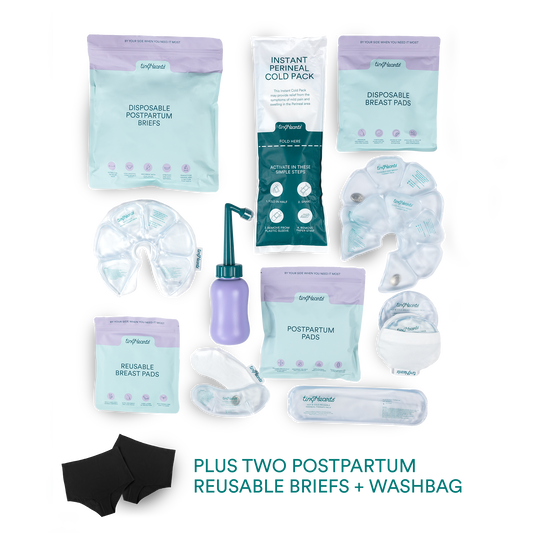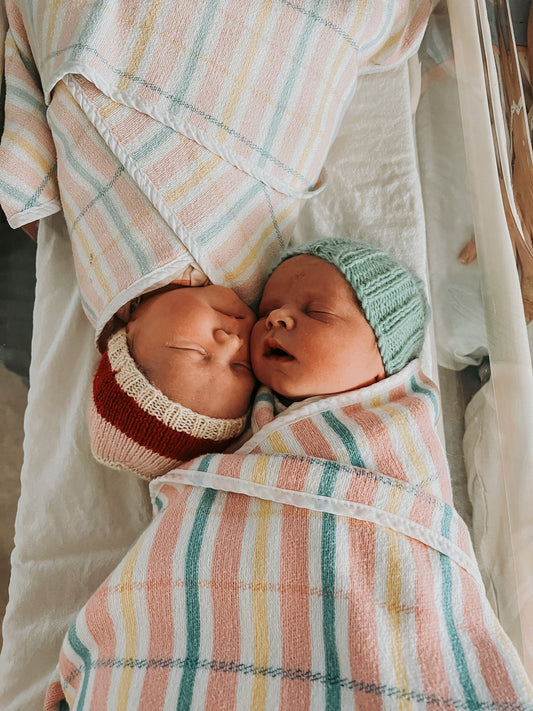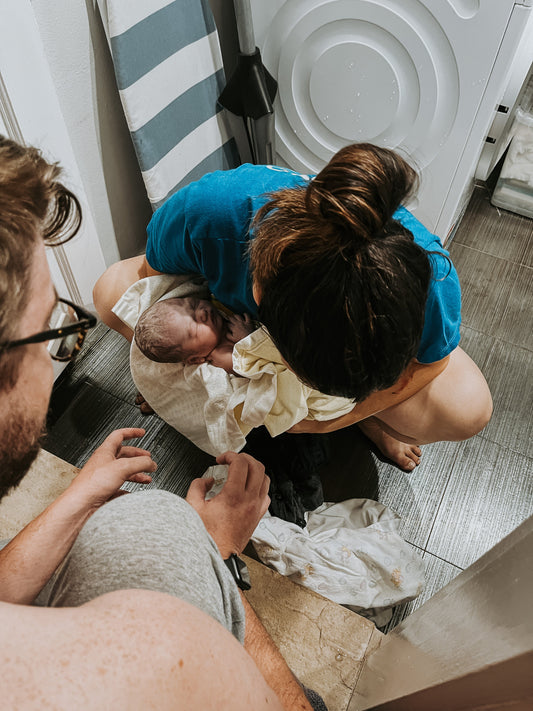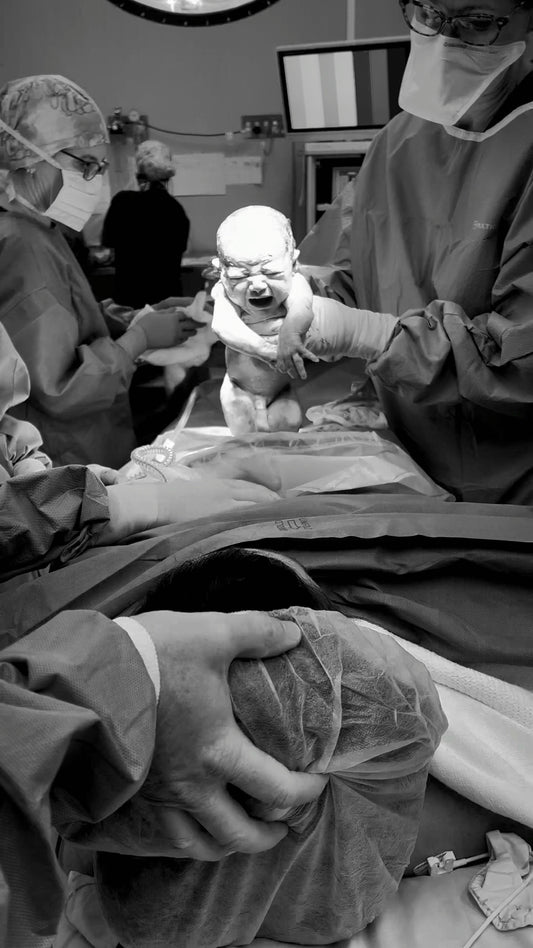Bringing home your tiny bundle of joy may just be the most exciting and beautiful experience of your life - but it can also be one of the most overwhelming. It may seem like this newest little love of yours has a whole new language of their own. Well, what if I told you they do... The good news is that with a bit of reading below, you will be better equipped to understand it!
This blog is brought to you by our paeds nurse, sharing a bit of her knowledge on newborn states and the cues that go along with them. These may just help you learn your little one's lingo and better enable you to connect with each other. Getting to know your bub's special language can allow you to tune into their needs and respond sensitively when your bub is communicating with you. By slowing down and noticing the subtle ways bubs tell us things, you will help bub know they can trust you to love and protect them.
When it comes to bub's communication, we can break it down into two main components; their "states" and their "cues". By states, we're essentially talking about conscious states. Newborns will move through these smoothly, yet sometimes quite quickly, so having an awareness of what you're looking at is key. We'll discuss cues a little later but first, let's talk newborn states. I'll break 'em down below.
Quiet Sleep: Bub is laying still. They may startle or twitch but won't have face or eye movements. It's normal for bub to still be sucking even though they will likely be hard to wake up. The quiet sleep state is a good time for you to leave bub to rest, but you could also trim nails at this time.
Active Sleep: Bubs in active sleep will wake up a lot more easily, and it's common to see their eyelids fluttering. They may suck and smile as well as having other body and facial movements while they snooze. Bubs may also cry out briefly whilst sleeping, but this doesn't mean they're ready to feed. Wait till they're fully awake.
Drowsy: This state comes before waking and again before they drift off to sleep. Drowsy bubs will have smooth movements, their eyes open and close softly or appear glazed over like they're staring into the distance. Bub may drift off back to sleep, or if you'd like them to wake, gently give them something to see, hear or suck.
Quiet Alert: This is prime time, baby! Bubbas in the quiet alert state are keen to be with you. Their eyes are open and bright, and they'll focus on your face, your voice or moving objects. You can stimulate this state and keep them alert by giving them something to look at, talking or singing gently. If bub looks away from you, it shows they need a rest, so go slow and allow them to take little breaks from their full attention on you. Even a few moments staring into your eyes can be very exhausting.
Active Alert: Bub will have a lot of body movement going on here, and at times it will seem too much. They may be fussing and will be more sensitive to your actions. Often bubs in the active alert stage will start to cry or fuss when they simply need a change of activity or for you to stop what you're doing. Being tuned in to this state especially can help avoid overstimulating your little one to the point of the next state below.
Crying: We all know what it looks like, and bub's crying state will likely be telling you they've simply had enough. Lots of body movement that may become jerky, grimacing and looking away can signal they need a change. If bub is in this state, I suggest you do one of two things: decrease stimulation or increase comfort. It's sometimes a tricky balance to find, but one soothing action over and over - such as rocking, will work best.
Perhaps the most important thing to take away when thinking about the above is that your little love will need your help transitioning from state to state. Sometimes this will be guiding them towards wakefulness - which is best done with "variety", and sometimes it will be guiding them towards sleep, or at least calm, which is best done with "repetition."
Variety for bub includes all sorts of ways to stimulate them and may include things like talking, undressing them [if it's not too cold!], sitting bub up or putting them on your shoulder, rubbing bub's tummy gently or giving them something to grasp or suck. Repetition for bub means focusing on one soothing action at a time and repeating it over and over. This could be wrapping bub snuggly in a blanket and gently rocking, gently bouncing on a gym ball with bub securely in your arms, walking, dancing or swaying with bub or stroking one area of their body such as their head foot or back. So, if you remember one thing from this, let it be this: Variety to Awaken / Repetition to Soothe.
I mentioned earlier the other component of newborn communication is what we call cues. When bubbas are keen and ready to connect with you, they will give many little signals to engage. We call these engagement cues. Likewise, when bubs have had enough or simply need a break, pause or rest, they will give off other signals. These are called disengagement cues. When it comes to both of these, it's important to really slow down and take notices. Bub needs you to pay attention to their subtle behaviours so that you can help them in whatever they are needing. Some cues are easier to spot than others, but taking time to look for them will allow you to best speak bub's special lil language. I thought I'd share some common cues below.
Engagement Cues - so these are the ones that bub is telling you, "I'm ready to connect with you", and this means it's a good time to talk to your little one, hold, feed or play with them. Engagement cues include:
- stoping moving and looking at you
- smooth movements of arms and legs
- reaching out to you
- smiling
- feeding sounds
- cooing/babbling/talking
- eyes wide and bright, raising head or turning towards you
Disengagement Cues - these cues are bub telling you "I need a rest - or I need some help", so bub may simply be overstimulated and needing a change of activity or pace. They may also take a break themself by falling asleep, or they could be needing help to achieve this. Remember crying is the ultimate disengagement cue and will likely happen after the more subtle cues have been missed. Disengagement cues include:
- turning head away
- back arching
- squirming or kicking
- spitting up/vomiting/hiccups
- falling asleep
- yawning or frowning
- hand to mouth
- fast breathing
So there you have it—a little insight into your bubba's unique way of telling you what they need. I must let you in on the best bit, though - perhaps the real benefit of slowing down to really take notice of your bub's states and cues is that it pulls you into the moment, and you'll find you're much more present with your little love. Sure, this helps with attachment, but more than anything, it lets you soak in the miracle of this little life you've created.
Take a breath, slow down and really notice... now perhaps that's the secret to a mindful life for all of us?!
They're only this little once, so take it all in. Bub is telling you things before you even know.








